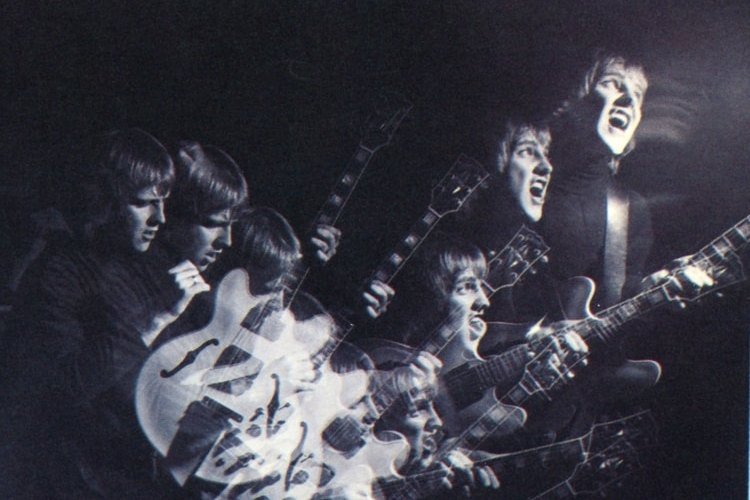RUSH - MOVING PICTURES: Elevating From The Arena Rock Norm
If 2112 is the album that proved Rush could have a career, Moving Pictures is the album that ensured they would stay in the business on a long-term basis. A lot of bands get lazy or lose focus once they've comfortably established their audience but this was never the case for Rush. They took advantage of their commercial cachet to further their sound while simultaneously refining it to make their adventurous nature more accessible - and Moving Pictures represents a magical summit where their interests and development synced up perfectly with the interests of the mainstream rock audience, making it their greatest hit and their greatest album all at once.

Side one is the finest single side of material Rush everrecorded. It bounds out of the gate withatmospheric instant classic "Tom Sawyer," a portrait of a self-styledindividual whose characteristics double as a portrait of drummer/co-lyricist Pearthimself. It's distinguished by an almost soul-style backbeat and catchy synthhook that bassist/vocalist/keyboardist Geddy Lee once used as a test patternfor setting up his synths. "Red Barchetta" follows, anotherrebel-themed tale set in a future where cars have been outlawed. It shows howmuch Rush had streamlined their sound, delivering a side's worth of tempochanges and riffs in just over six minutes. It's a great showcase for guitaristAlex Lifeson, who does everything from delicate rhythmic shadings tofret-scorching solos. Everyone gets some soloing in on "YYZ," athrilling instrumental inspired by a bit of Canadian airport morse code inwhich every player displays their chops and telepathic communicationsimultaneously. The side ends in grand style with "Limelight,"Peart's personalized yet relatable musings about an artist developing copingstrategies for success. It's powered by one of Lifeson's most recognizableriffs and also boasts one of his loveliest solos on the tag.

After side one has won the listener over, side twostretches out into more challenging territory. "The Camera Eye" wouldbe Rush's final epic for a while. The lyrics offer personalized portraits ofstreet life in London and New York, set to a fascinating mixture of proggyjamming and hooky verse melodies that free-flow into each other. It's one ofthose epics that's almost impossible to assimilate in the mind: the suddentwists of the arrangement always manage to take one by surprise. "TheWitch Hunt" was the debut of the final part of trilogy called "Fear"(intriguingly, they released the three parts in reverse!). It's a slow-burnerthat utilizes tribal percussion and a Sabbath-esque riff from Lifeson as thebackdrop for a portrait of the ugliness of mob justice. Things end on aforward-thinking, hopeful note with "Vital Signs," in which Peartharnesses a string of techno-jargon phrases to portray the relentless need ofthe ambitious to move forward. The music deploys sequenced synths, chuggingguitar riffs and a taut interpretation of reggae rhythms to create amulti-dimensional band anthem.

Simply put, you can't understand Rush without absorbing this album. Moving Pictures synthesizes everything the band learned as musicians and songwriters up to this point, wrapping it all up in a package that was commercial enough to produce hit singles but challenging enough to incorporate complex arrangements and multiple genres. Always restless, Rush would soon abandon the comfort zone they perfected here and spend the rest of the decade trying to reinvent themselves on albums that would sometimes divide the fanbase. Luckily, Moving Pictures provided a sturdy foundation for those experiments and it remains a timeless listen.


